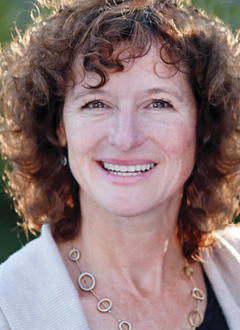
The following has been adapted from It's All About the Books by Tammy Mulligan and Clare Landrigan
The following has been adapted from It's All About the Books by Tammy Mulligan and Clare Landrigan
Each year we spend a week or two at the end of school helping readers make a reading plan for summer vacation. The first step we teach our students is to think about when they will have time to read. Will they be spending more time at home? Are they going away? Visiting family? Are plans still undecided? Students talk with their families to see if there are any specific summer plans. We give students a summer calendar that shows when school will end and when it begins again so that they know how many days they have to plan.
We also want our readers to think about where they will read. Will they spend more time in a car or on public transportation? Will they be away or stay at home? This information will help them devise the best plan they can.
Tips for Summer Reading
1. Read in the car or when traveling on a bus.
2. Begin each day with reading before it gets too hot.
3. Partner-read with a parent or caregiver.
4. Read books to a younger child, a friend, or a neighbor.
5. Keep books in a bag so that they are easy to grab.
6. Keep books in a spot where you can find them.
Now that our readers have some ideas about when and where they will read, we ask them to think about what they want to read. The independent and small-group reading sections of the bookroom have baskets to help students decide so they can make a plan.
Summer reading affects student achievement, and schools are working hard to find creative ways to get books into students’ hands. Following are a few different ways we have
helped schools make summer reading possible for all students.
School Book Swaps for Vacations
Each spring some schools organize a whole-school book swap. They ask families to look through their bookshelves and find children’s books that they would be willing to donate to the swap. What typically happens is that some families donate many titles, whereas others donate only a few. To ensure that they have enough titles for the swap, teachers, librarians, and literacy coaches also look through school libraries, classroom libraries, and the school bookroom for titles that could be added to the swap.
Once there are enough books, a few volunteers and teachers organize the books so that students can begin selecting some for summer reading. Students in the younger grades usually select books first to ensure that they find books that match their personal and academic goals. These books are placed in summer reading book bags and sent home for the summer. One school even adds a bookmark and a book light to each bag as small gifts for the students. What if you don’t receive enough donations? In one school, many students did not have books to contribute, so they reached out to a school in a different community for help.
Summer Book Appointments
Another way schools help readers to continue reading over the summer is through summer book swap appointments. All student appointments are scheduled on the same day of the week so that only one staff person is needed each week. The student simply meets a teacher or administrator in the bookroom, returns the books she has finished, and picks new titles to read during the upcoming week. It takes only a few minutes, but this check-in and supply of new books keeps many students reading all summer.
How do you find staff to do this work? In some schools the building principal, the literacy coach, and the school secretary work in the building over the summer, so they conduct many of these meetings. At other schools, teachers volunteer to help with one book swap appointment during the summer. If one school is hosting a summer program, then all of the book swap appointments are held at that school.
Schools have found that these book swap appointments are well worth the small investment of time. Many students who typically didn’t read over the summer and fell behind in skills now come back to school in the fall reading right where they left off in June.
Field Trip to the Public Library
In many school systems, a public librarian visits the schools to talk about the summer reading program. One of our schools found even more success when the class went to the public library. Having a chance to see what the library looked like, searching the bookshelves with their teachers to find their favorite books, and seeing how to get a library card made a difference for many readers.
Online Book Clubs
Another motivation for readers to read all summer is class blogs. Before the end of the school year, teachers set up book clubs for their students so that they know what books the class will be blogging about during the summer. Students sign up to read these books and then write a post or comment on each other’s posts. Teachers sometimes prepare posts about these books during the school year so during the summer months all they need to do is post what they have written. Connecting students to each other can be very motivating to keep them reading all summer long.
•••
To learn more about It's All About the Books visit heinemann.com
Related Reading

The following is an adapted excerpt from Tammy Mulligan and Claire Landrigan's It's All About the Books.
 Clare Landrigan is a staff developer who is still a teacher at heart. She began her work as an educator over twenty years ago, teaching in an integrated first- and second-grade classroom at the Eliot Pearson Children's School in Medford, MA. She now leads a private staff development business and spends her days partnering with school systems to help them implement best practices in the field of literacy. Clare is the coauthor of the book,
Clare Landrigan is a staff developer who is still a teacher at heart. She began her work as an educator over twenty years ago, teaching in an integrated first- and second-grade classroom at the Eliot Pearson Children's School in Medford, MA. She now leads a private staff development business and spends her days partnering with school systems to help them implement best practices in the field of literacy. Clare is the coauthor of the book,  Tammy Mulligan began her work with Clare Landrigan over twenty years ago co-teaching in an integrated first and second-grade classroom at the Eliot Pearson Children’s School in Medford, MA. They believe that effective professional development includes side by side teaching; analysis of student work; mutual trust; respect; and a good dose of laughter. You can find Tammy online on
Tammy Mulligan began her work with Clare Landrigan over twenty years ago co-teaching in an integrated first and second-grade classroom at the Eliot Pearson Children’s School in Medford, MA. They believe that effective professional development includes side by side teaching; analysis of student work; mutual trust; respect; and a good dose of laughter. You can find Tammy online on 
